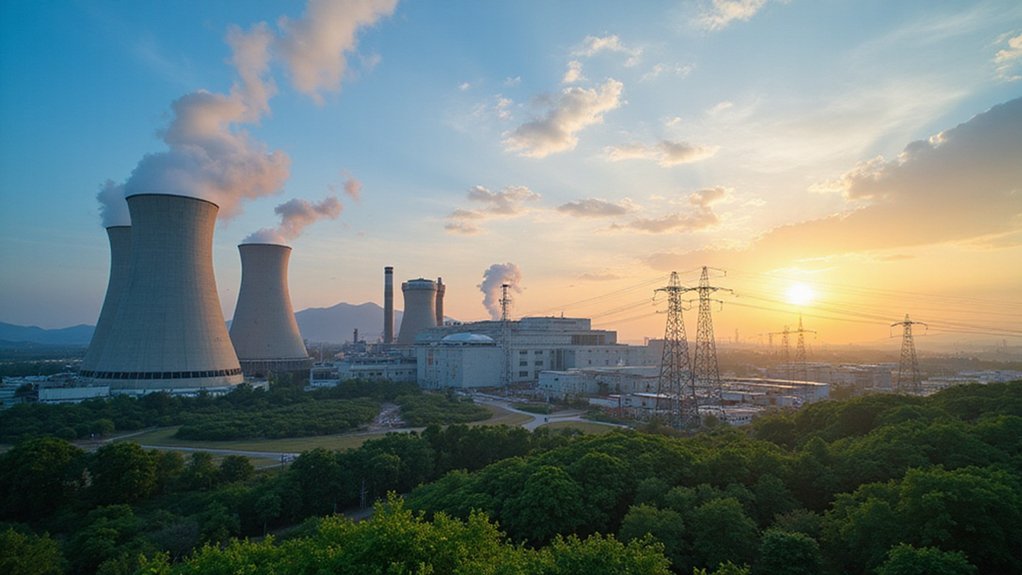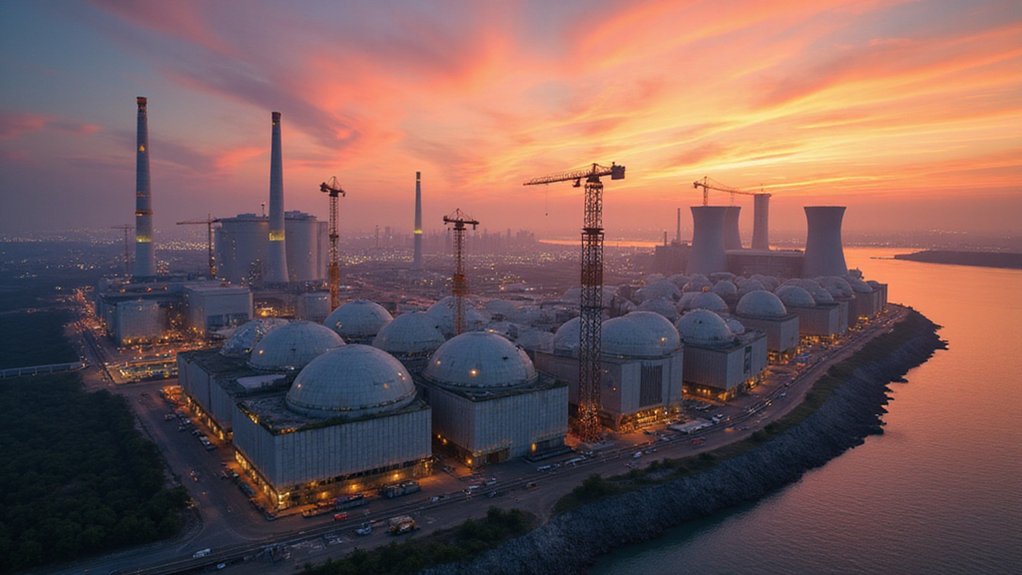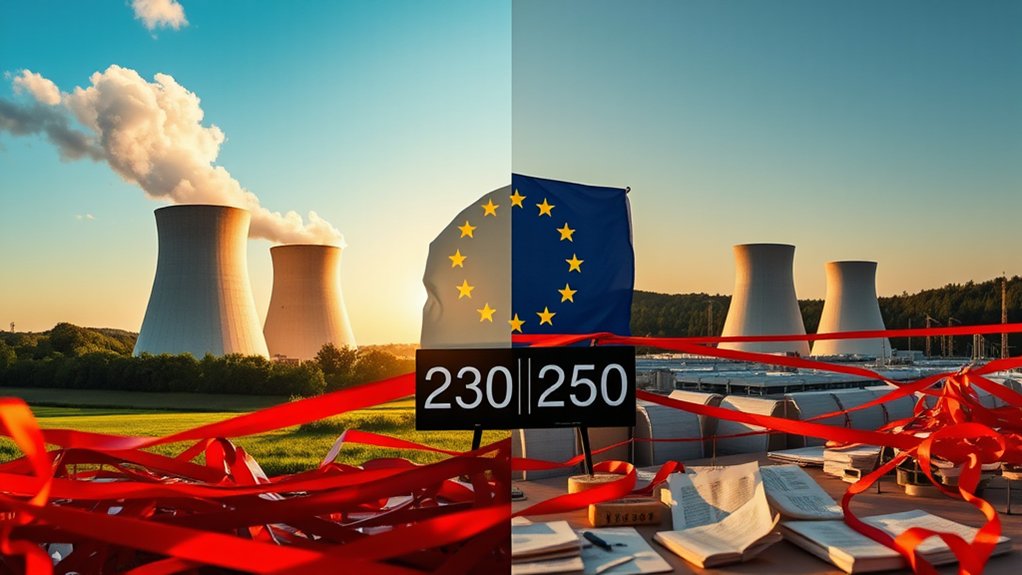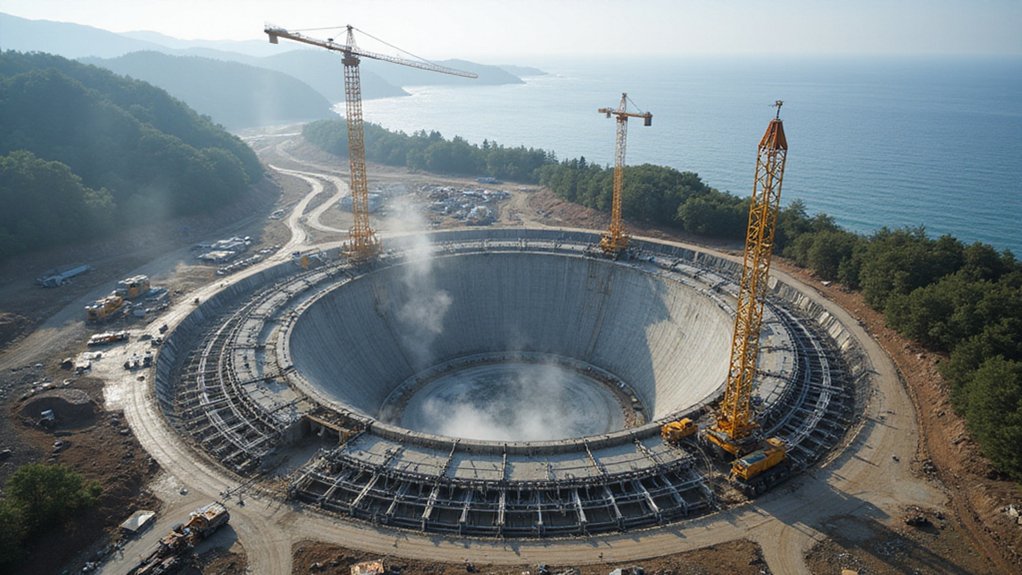After years of being the energy world’s pariah, nuclear power is staging a spectacular comeback. With roughly 440 reactors providing 9% of global electricity, nuclear isn’t exactly small potatoes in our energy mix. And guess what? It’s growing. Last year’s nuclear output hit 2602 TWh, up from 2545 TWh in 2022. Not groundbreaking growth, but steady. Like the tortoise winning against solar’s flashy hare.
France gets it. They’re cranking out 70% of their electricity from nuclear plants while the rest of us debate whether nuclear is “scary.” Ukraine, Slovakia, and Hungary aren’t far behind, getting about half their power from atom-splitting. Turns out, when energy security matters, nuclear starts looking pretty attractive.
The industry isn’t just maintaining—it’s booming. Over 70 gigawatts of nuclear capacity are under construction globally, the highest level in thirty years. That’s not some pie-in-the-sky projection. That’s concrete being poured, steel being welded, right now.
By 2026, nuclear generation will be 10% higher than today’s levels. For an industry that moves at geological time scales, that’s practically sprinting. And it’s happening everywhere. More than 40 countries are expanding nuclear capacity, with new reactors firing up in China, India, South Korea, and across Europe. Tech giants like Google, Amazon, and Microsoft are driving this revival through partnerships developing small modular reactors for their power-hungry data centers.
Even Japan is getting back in the game after their Fukushima freakout. The timing couldn’t be better. Global electricity demand is growing at 3.4% annually through 2026, with China and India leading the charge. That’s six times faster than overall energy consumption. The 2024 data confirms this trend, with electricity demand rising nearly twice as fast as wider energy demand. Someone’s got to keep the lights on.
Small Modular Reactors are the new hot thing. Smaller, faster to build, and potentially cheaper. They could hit 80 gigawatts by 2040—about 10% of nuclear capacity.
The IEA predicted this comeback years ago. Now it’s happening. Nuclear, alongside hydropower, is keeping the clean energy evolution from being a complete fantasy. Not bad for yesterday’s villain. Beyond electricity generation, nuclear technology makes significant contributions to sustainable development efforts, assisting with everything from disease control to space exploration.
References
- https://www.iea.org/reports/global-energy-review-2025
- https://www.world-nuclear-news.org/articles/nuclear-output-to-reach-new-record-by-2025
- https://world-nuclear.org/information-library/current-and-future-generation/nuclear-power-in-the-world-today
- https://www.iea.org/reports/global-energy-review-2025/electricity
- https://energycapitalpower.com/nuclear-power-set-for-record-growth-by-2025-iea-report-finds/








